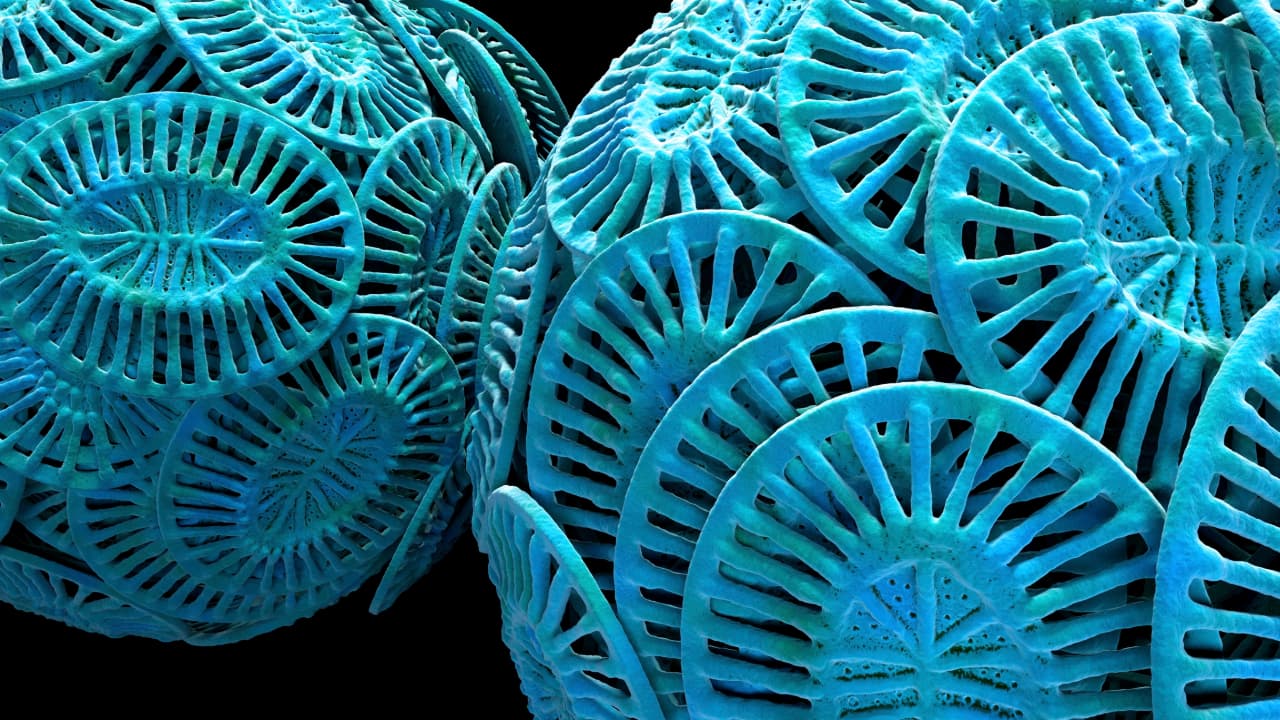Microscopic algae called coccolithophores are vital for Earth’s climate, removing carbon, producing oxygen, and supporting the marine food web. Scientists worldwide are studying them to understand their role in keeping our planet healthy.
Microscopic algae called coccolithophores are so tiny, you can’t even see them with the naked eye. Yet, they play a big role in Earth’s climate. These are single-celled organisms that float near the ocean surface. They look like tiny discs with delicate chalky plates made of calcium carbonate. Over millions of years, these plates settle on the sea floor, forming layers of chalk and limestone. These layers act like a natural record of Earth’s past climate.
Recently, five major research centres in Europe have come together to make October 10 International Coccolithophore Day. Their goal is to raise awareness about these tiny but important creatures and the many roles they play like removing carbon from the atmosphere, producing oxygen, and supporting the ocean food chain that all life depends on.
Why Are Coccolithophores Important?
Though they are very small, coccolithophores are one of nature’s best tools for managing carbon dioxide. Every year, they produce more than 1.5 billion tonnes of their chalky plates and help in trapping carbon from the atmosphere and storing it deep in ocean sediments for thousands of years. They also produce oxygen through photosynthesis, just like plants on land. They provide food for tiny sea creatures that form the base of the ocean’s food web, helping support larger marine life and keeping marine ecosystems in balance.
Coccolithophores often cover large areas of the ocean in blooms. However, climate change is making the ocean warmer, more acidic, and changing its nutrient supply, which threatens these tiny algae and the life they support.
What Makes Coccolithophores Unique?
What sets coccolithophores apart from other plankton is the chalky plates they build. These plates help them survive and carry it deep into the ocean where it remains for millennia. This process, called biomineralisation, leaves behind fossil records that scientists use to study Earth’s climate history.
How Scientists Study These Tiny Plankton
In Scotland, the OceanCANDY team at the Lyell Centre studies how coccolithophores absorb carbon dioxide from the air and store it in the ocean. They also investigate how rising ocean temperatures and acidity may impact this process, using computer models to predict the future.
In Norway, researchers at NORCE study the life cycle of coccolithophores, including how they grow, who eats them, and how viruses can kill them. These interactions influence how carbon moves through the ocean food web. They also examine ancient DNA found in deep-sea mud to understand how coccolithophores have responded to past climate changes.
In Croatia, scientists focus on how coccolithophores affect the ocean’s carbon cycle by interacting with bacteria and breaking down organic matter. This research shows how tiny plankton can influence global carbon balance and ocean chemistry.
The International Nannoplankton Association (INA) works to connect living coccolithophores with their fossil records. They use the tiny chalk plates to date rocks and track Earth’s climate history, linking what we see in today’s oceans with what happened millions of years ago.
Why Have a Day for Coccolithophores?
It might seem unusual to have a special day for such small creatures, but the people behind the campaign believe it’s an important step.
Dr Sarah Cryer from the CHALKY project explains, “We most often talk about whales, coral reefs, and ice caps, but coccolithophores are a vital part of the planet’s climate system. They remind us that the smallest organisms can have the biggest impact, and that microscopic life plays a crucial role in shaping our planet’s future.”
As the ocean faces growing pressures from climate change, understanding and protecting these microscopic ocean architects could be vital for keeping our planet healthy.
Source: Ruđer Bošković Institute. “They’re smaller than dust, but crucial for Earth’s climate.” ScienceDaily. ScienceDaily, 10 October 2025.
